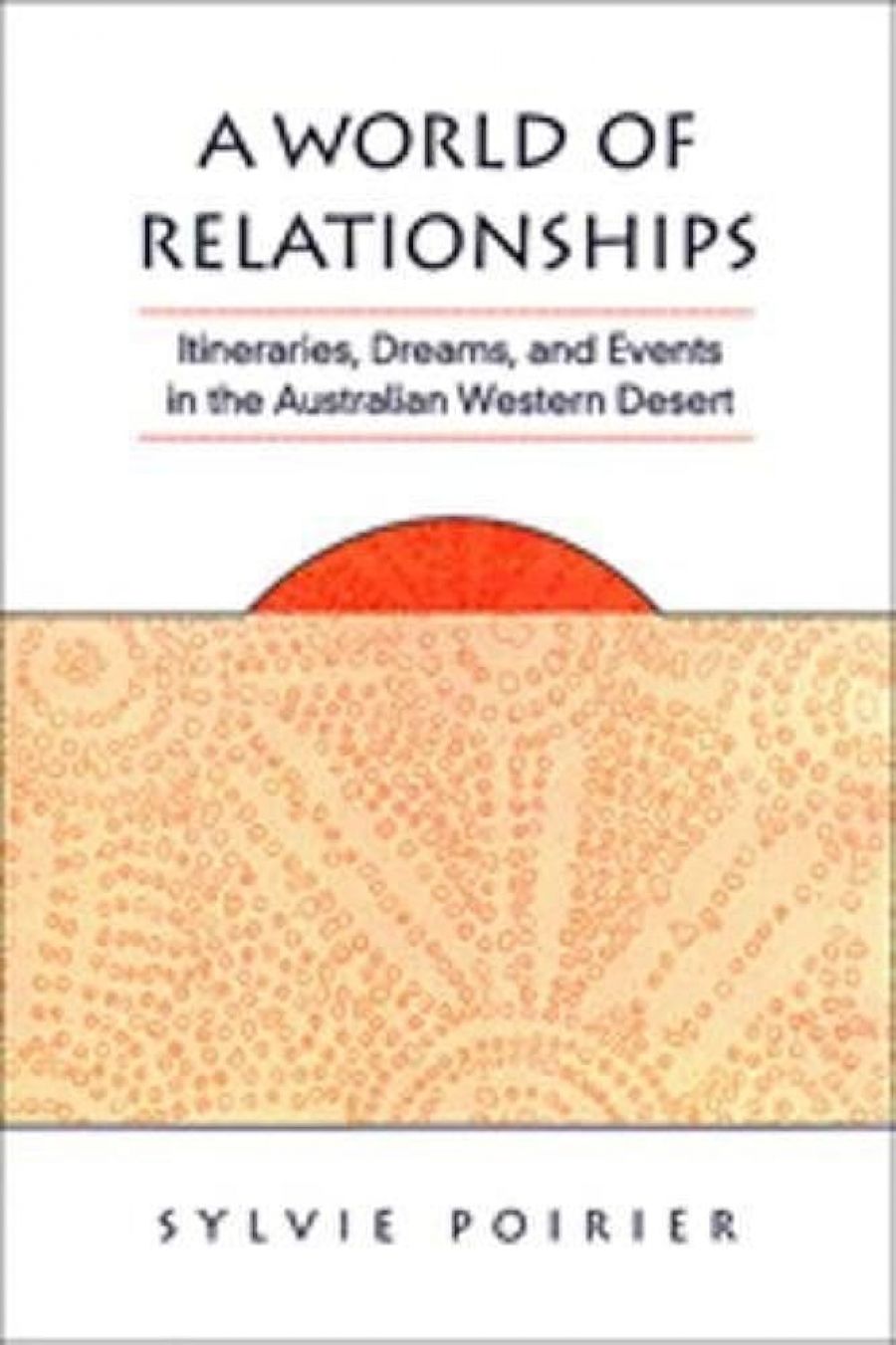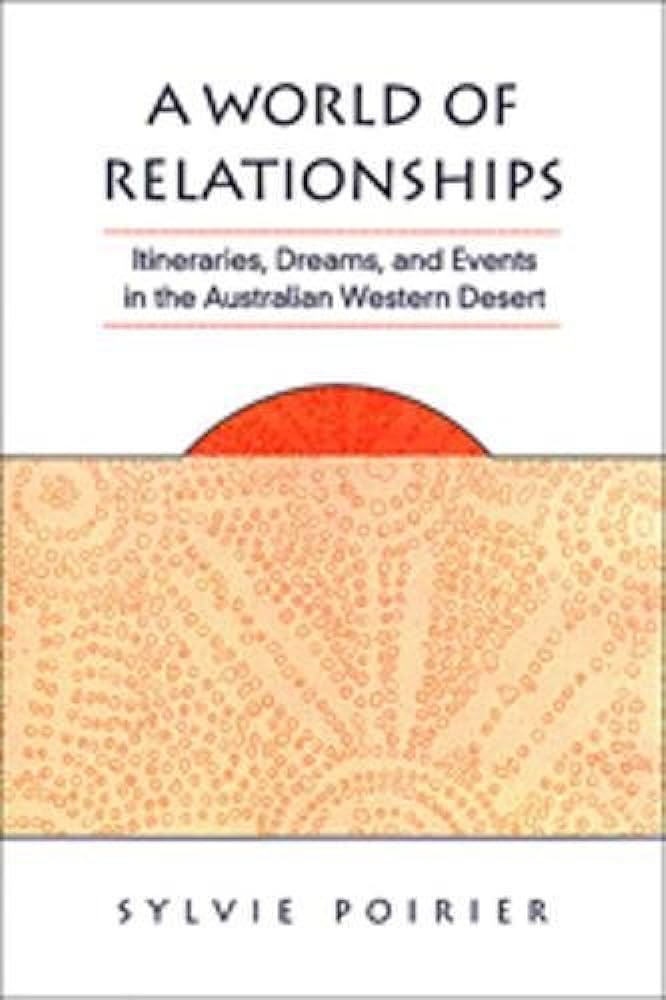
- Free Article: No
- Contents Category: Anthropology
- Review Article: Yes
- Article Title: ‘Might be something’
- Online Only: No
- Custom Highlight Text:
We use the term ‘The Dreaming’ to refer to an Aboriginal way of thinking about their place in the universe; it is ‘a cosmology, an ancestral order, and a mytho-ritual structure’, in the words of Canadian anthropologist Sylvie Poirier. The Western Desert people with whom she lived for many months in the 1980s and 1990s (the Kukatja – though she acknowledges the difficulties of such labels) call it tjukurrpa, a term whose meanings include ‘story’. The stories are about the world- and knowledge-creating ancestral creatures. In the Kukatja world, as manifested in the Western Australian communities of Wirramanu, Mulan and Yagga Yagga, the more prominent stories are about Luurn (kingfisher), Wati Kutjarra (two initiated men), Kanaputa (digging stick women), Marlu (kangaroo), Karnti (yam) and Warnayarra (rainbow snake). When Kukatja narrate the travels of these creatures, they select segments in the itinerary that account for the narrator him or herself as a person who belongs to the places named in the story.
- Book 1 Title: A World of Relationships
- Book 1 Subtitle: Itineraries, dreams, and events in the Australian Western Desert
- Book 1 Biblio: University of Toronto Press, $29.95 pb, 303 pp
- Book 1 Cover Small (400 x 600):

- Book 1 Cover (800 x 1200):

Characterising this body of knowledge as ‘itineraries’ rather than ‘maps’, Poirier follows deCerteau: a map is a description of space, an itinerary is a performance of it. The desert is criss-crossed with stories, and the itineraries that they recite encode relationships between people. Ritual gatherings are occasions for assembling story segments and their tellers/singers.
In the contemporary Western Desert, modern means of transport and communication (including mineral explorers’ seismic roads) and the relatively high disposability of people’s meagre incomes enable a lively culture of ritual for those who are now interested in enacting their law in this way.
Anthropologists once thought that Aboriginal cosmology, especially when inculcated dogmatically by stern elders, was too immobile a framework to serve a people living through momentous changes. Poirier reports that the mythical tracks of the tjukurrpa are ‘open’ to negotiation of their application to particular peoples and places. She furthers our understanding of how Kukatja experience what we call ‘history’ by highlighting two other ‘realms’ of knowledge that have received less attention from researchers: stories of everyday life and dream stories.
To cautionary effect (sometimes), the Kukatja tell stories about ‘Neighbouring Others’ (Poirier’s term), such as mischievous little people and beings of malevolent spirit. Kukatja tell tales of John Wayne (the good cowboy), a bad cowboy, the three Ks and Pauline Hanson. Sightings of the bad cowboy help the Kukatja to make sense of car accidents. The three Ks (travelling in blue cars) figure in Kukatja stories about the hazards (alcohol, fights) of visiting towns. When Kukatja find unidentifiable vehicle tracks in the desert, they sometimes think of the three Ks. Evidently, the Kukatja have not heard of the Ku Klux Klan, for they credit Hanson with training the three Ks to attack and kill Aborigines. I wonder what conclusions the Kukatja draw from Hanson’s television beatification as a ballroom dancer? If, ‘for the Kukatja, there are no absolute divisions between the visible and the invisible, the real and the imaginary, the present and the ancestral past’, then they may be ideal spectators of ‘celebrity’, ‘reality TV’ and the televised theatre of state.
Kukatja have dreams, which they call kapukurri and regard as an important form of knowledge, including access to the sacred realm. Dreams are usually retrospectively predictive: they make sense in the light of an event that they precede, and they are handy when it is an unfortunate or unexpected event that has to be recouped to knowledge. To enquire about another person’s dream is odd, as the embarrassed Poirier explains, for each individual has the prerogative to tell his or her dream, and to do so to best effect. A dream does not have to be interpreted upon awakening; it can be stored up and told in a context with which it resonates. Others may comment on its significance. There is no Kukatja code for dream decipherment, and ‘rarely do dream narratives and interpretations carry a sense of fate or determinism’.
Poirier writes that she often found it difficult to discern in which ‘realm’ – tjukurrpa, kapukurri, real present, real past – a story that she was hearing existed. In Kukatja stories, ‘the different realms of action intersect with one another’. The common expression ‘might be something’ captures the western desert openness to the construction and reconstruction of the significance of dreams and events.
This fine book has its own rhetorics of knowing. Ethnographies build knowledge partly by piling anecdote upon anecdote. A reviewer cannot replicate this mode, but here is one story. An old lady of ‘very esoteric personality’, medicated for her severe headaches, dreams prolifically: in one, she wrings the neck of a tiny kangaroo that a maparn (healer) has coaxed out of her forehead. ‘She didn’t complain of any migraines in the days that followed,’ reports Poirier. Thus are Kukatja dreams real: aligned discursively with events, they make sense.
Ethnographies make particulars meaningful by treating them as instances of a model. Models of what – Kukatja culture? Western Desert culture? Whatever the level of generalisation, such models may acquire the multiple resonance of myth. Poirier yields to anthropology’s essentialist temptation when she essays this grand binary: ‘Contrary to Western epistemology, Aboriginal epistemology is not concerned with the absolute demarcation between different levels of reality.’ Perhaps this sentence will make quotable sense to indigenous academics who espouse ‘indigenous pedagogy’ and ‘indigenous methodology’, legitimising their own social mobility with an identity story. But in some contexts this dichotomy could disqualify those who invoke it.


Comments powered by CComment